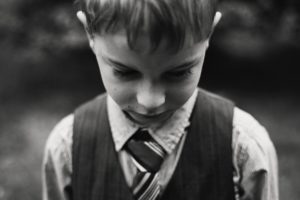Final editing planned for late 2024 / early 2025
with published in early spring
Preface
Child abuse is invisible. It is a core problem in every American community impacting all of us, our institutions, and every aspect of our quality of life every day. Limited institutional transparency has kept topics we present here out of the public domain making at-risk children hidden and rarely discussed.
There are 950 Court Appointed Special Advocate/CASA organizations in the U.S. working for the best interest of abused and neglected children in Child Protection Court Cases; there are about 90,000 CASA guardians ad Litem (CASA GAL) volunteer child advocates in the U.S.
Despite CASA’s support, information about child abuse varies by the source and community, is often minimized, and very hard to find. State, County and Federal child outcomes-based metrics are not transparent, often guarded or simply do not exist. Combined with America’s cultural propensity to avoid “family issues” and unsavory topics like child sex abuse, there is very little we the people know about what happens in abusive homes or the institutions chartered to keep children safe.
This failure to track the metrics of success and safety of children we claim to value highly will be repeated in the following pages. It’s why we know so little about the tens of millions of children reported to Child Protective Services (CPS) over the years. There is almost no information tracked or reported on serious issues of violence done to children, child suicide, self-harm, and what successes and failures these children experience during and after leaving CPS.
It is hard to understand the wide variation in numbers reported by institutions and agencies. For instance, many national sources report 10-14% of child protection cases include sex abuse. In our interviews and my experience over 12 years as an active CASA GAL, about half of my caseload children were sexually abused or in the room when it happened to a parent or sibling.
All of my caseload children were under twelve, half of them not yet six and two were not yet four years old. Most were abused for between two and four two years. The oldest child suffers an average of four years before entering CPS.
None of my child abuse stories were known outside of Social Services and the Court. No caregiver went to jail or paid a fine for the terrible things they did to children as young as two years old. Most of the offenders were left in the home with other children for years. Many children were returned to known sex offenders and violent homes.
Sex abuse, and sustained neglect are as traumatic as physical violence to the child. This is rarely witnessed by outsiders and therefore underreported and unknown by anyone outside the family. When we do read about it, often the language is softened with words like maltreatment and trafficking instead of the rape or severe beating suffered by the child.
Child abuse and childhood trauma define not just the child’s mental health, but the broken juvenile and adult they become and the communities they live in.
This book digs deep into the muddy water of complex, related issues, to find clarity and provide solutions to wicked problems. This book is a guide to identifying, understanding, and dealing with the most critical social issues in our nation today.
By including stories of children and insights of people from related fields, at-risk youth, and adult survivors we give the reader multiple perspectives and experience at a deeper level. Chapters are organized in groups to highlight critical aspects of this issue. The book is best read by first reading the chapter/topic that hits home for you.
Part One defines child abuse and trauma, demonstrating its frequency at all levels of society with observable trends during the COVID-19 pandemic.
Part Two contrasts/conditions of child wellbeing at local city/county/state levels and comparisons between the states and America’s peer nations.
Part Three digs into economic and social costs, racial issues, government, judicial perspectives; child and foster care, adoption, education, law enforcement, public & mental health,
Part Four explains trauma interruption, recovery, healing, and prevention.
If you can suspend your disbelief until you have read this work in full, you will gain a comprehensive view of the wicked problem of generational child abuse and what comes of it. You will see how childhood abuse creates broken people doing bad things and how helping them helps all of us lead better lives.
Sharing this book’s data and stories with your State Reps and other administrators and Legislators is key to bringing change to at risk children in your community.
Understanding and sharing the issues in this book will go a long way towards ending child abuse and healing the children you are reading about!
Statistics used in this book point to painful trends and conditions in our communities. You will find competing data in all categories. We have used data believed to be most supportive of the children central to this book. Uncomfortable as these numbers are, they give us insight to the critical issues we know need better answers if we are to empty prisons, improve school and public health, and make our cities safer.
IF YOU PURCHASE A PRINTED VERSION OF THIS BOOK, USE THE CODE BELOW TO ACCESS A FREE ONLINE VERSION THAT INCLUDES REFERENCE LINKS AND CHARTS APPEARING IN THE BOOK.
Finally, these pages include the hard work and many hours of research and writing by students from multiple universities that are listed at the end of the book.
Share this page with people that would benefit by having this book.








